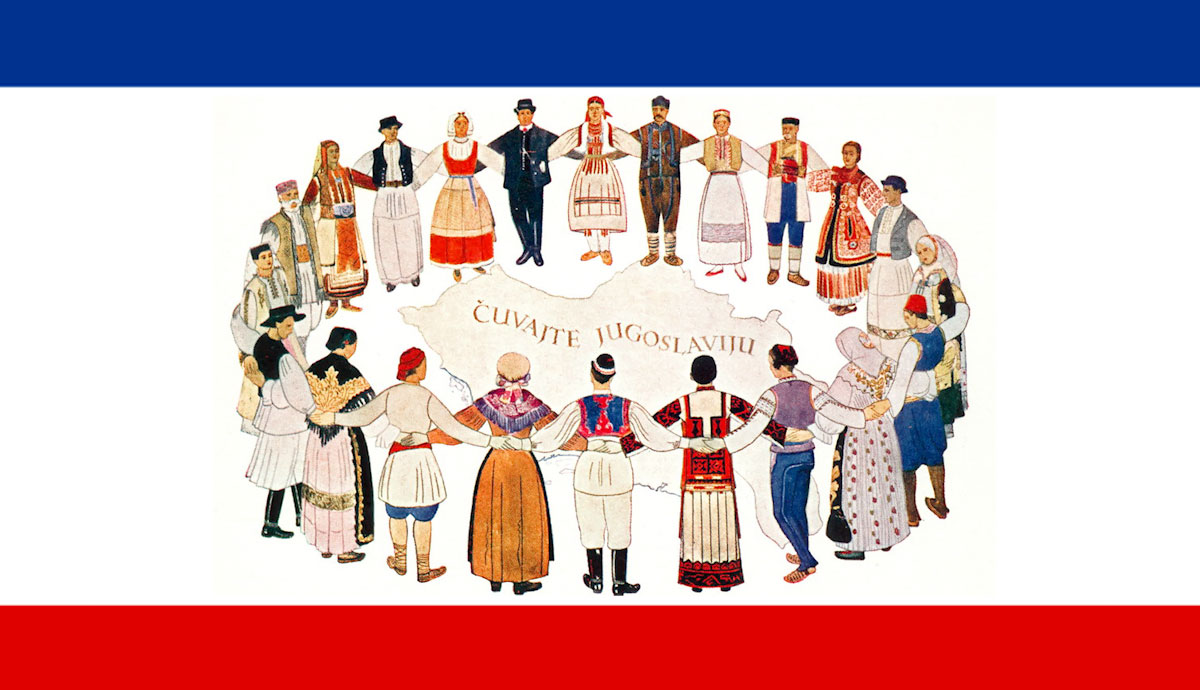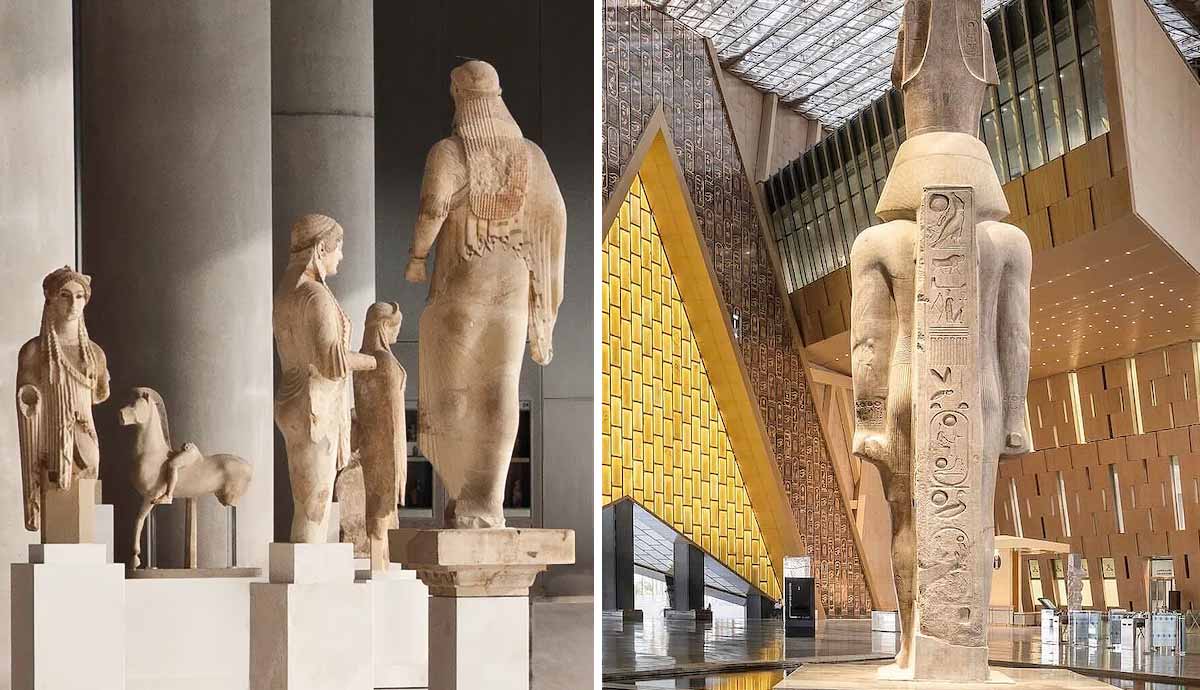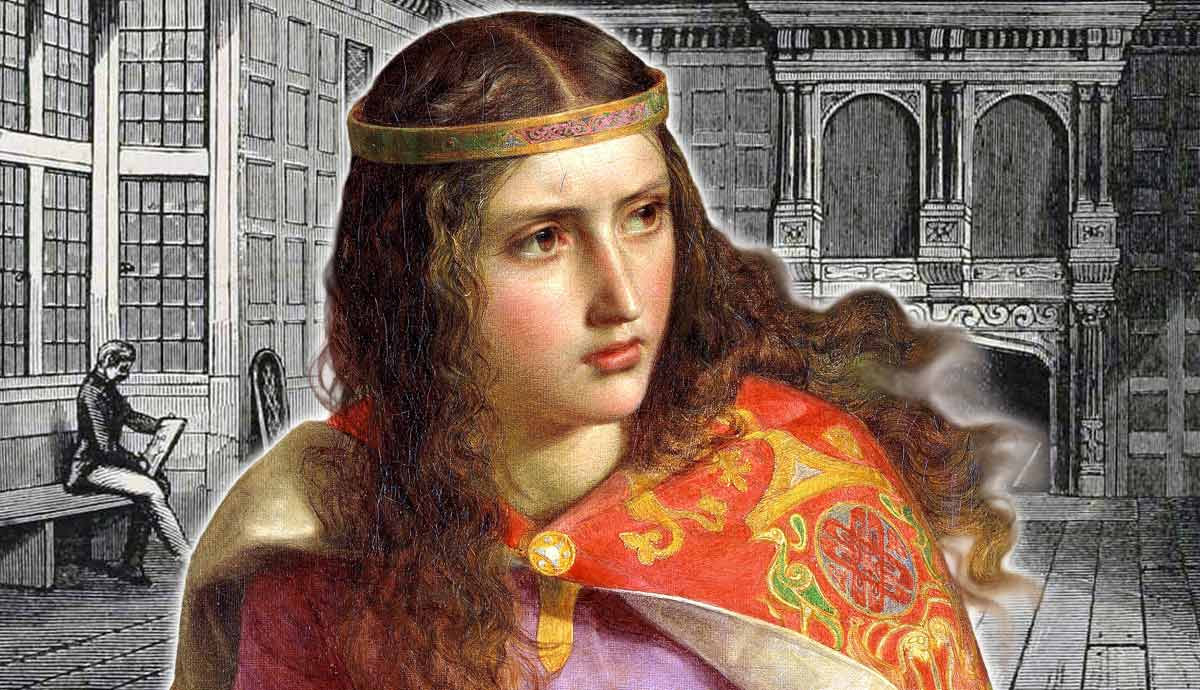
The bloody collapse of Yugoslavia in 1991–1992 brought about the end of an entire era, which did not only coincide with the collapse of socialism, under which the state saw its latest incarnation. Rather, it was a political project that marked the entire period of modernity in the Balkan Peninsula, a blueprint for a political community ever since the Europeans began seriously questioning the divine right of kings.
The Illyrian Provinces: The First Yugoslavia?
Few would think of Napoleon Bonaparte as one of the predecessors of the Yugoslav idea. Almost certainly, he would not have thought of himself in those terms either. Yet, he was the first to create a political community of South Slavs under the jurisdiction of the French crown.

Never before nor after would France exert such political influence in the faraway region, but Napoleon’s project of an “Illyrian” province was not just conjured by the military dictator-turned-emperor with a nostalgia for the past. It was already envisioned by the local elites.
Illyrianism at the time, however, did not imply a national identity. Up until the 18th century, Illyrianism was an ideology of the nobility, seeking legitimacy for itself through purported historical continuity, claiming that they were descended from the ancient Illyrians, who inhabited the Balkans before the common era. Occasionally it was used to gain legitimacy in the struggles of the noblemen of the Kingdom of Croatia, who sought equal treatment with the Kingdom of Hungary, of which they were a part.
Towards the end of the century, however, as nationalism became fashionable among the intellectuals and the increasingly learned middle class, more and more South Slavs were attached to the self-designation of “Illyrian” and sought to bring to life a new national project. Some of them went as far as drawing them up, and one, Sava Tekelija, actually sent his proposal to Napoleon, calling for the establishment of an Illyrian state, significantly emphasizing that Illyrian identity would help bridge confessional and religious differences between Catholics, Orthodox, and Muslims.
There is no proof that Tekelija’s proposal brought about the establishment of Illyrian provinces, but the French Revolution, even in its Bonapartist form, started rapidly spreading its ideas across the continent. This included not only universal liberty, equality, fraternity, and the abolition of feudalism but also nationalism. As an increasingly small number of people believed in the God-given right to rule, a rethinking of what constitutes the political community arose.

The answer for many following the French example became “the nation,” a community bound by a common language, culture, and history, even if those had to be rapidly constructed and did not adequately depict the situation in reality. It was not merely a project of the intellectuals either: Across the Habsburg border, in the Ottoman Empire, a rising merchant class would find these ideas to be a powerful legitimizing tool when asking the Sultan for greater self-government, eventually resulting in several “national” uprisings in the early 19th century, in what would become present-day Serbia, Greece, and Romania.
The Illyrian Provinces, although formally fully a part of the French Empire, followed this pattern. Although they were established in 1809, the French already took control of the region three years prior. Almost immediately, in the summer of 1806, they began publication of Kraglski Dalmatin, now widely considered to be the first newspaper in the Croatian language. Of course, none of the modern South Slavic languages were yet standardized at the time, but certain French bureaucrats and members of the intelligentsia certainly hoped to standardize the Illyrian language and establish an Illyrian nation, corresponding to present-day South Slavs, regardless of religion. Moreover, the name “Dalmatin,” referring to the historical region of Dalmatia rather than a particular ethnic group, testifies to the low (or even non-existent) level of national consciousness of what would, only a century later, be Croats and Serbs.

This “first Yugoslavia” was short-lived, ending in 1813 when the Habsburgs reasserted control over the area. However, the idea of Illyrianism lived on, with the nascent Croatian national movement still using the term well into the 19th century. However, the term increasingly became confined to the region of the Habsburg-controlled Kingdom of Croatia, and other competing national movements – Slovenian, Croatian, Bulgarian, and Serbian – gradually began to take precedence over the Illyrian. Moreover, from around the 1850s, the adherents of the unity of South Slavs began to use a new term: Yugoslavism.
In countries without fully formed national identities, Yugoslavism often overlapped with nascent nationalisms. In some cases, even the ideas of Balkan unity and a Balkan-wide state appeared alongside irredentist dreams of reviving a supposedly glorious past. Perhaps the most serious (and, in retrospect, most significant) attempt at unity was the Vienna Literary Agreement of 1850, which set the standard for the Serbo-Croatian language.
After a century and a half of public schooling, this language became the standard for a significant majority of the South Slavs, with over twenty million native speakers today. However, this common language is now, for political reasons, called Serbian, Croatian, Bosnian, and Montenegrin, depending on the country which uses it. Nevertheless, despite a common language, by the time of the unification of South Slavs in 1918, the process of nation-building of the three largest groups – the Serbs, Croats, and Slovenes – had been finished. The fourth group, the Bulgarians, was not even considered for the joint state.
The Second Yugoslavia: It’s (Not) About Nationalism

On December 1, 1918, the representatives of the three largest South Slavic nations met in Belgrade and declared the establishment of the Kingdom of Serbs, Croats, and Slovenes. The Kingdom was forged out of the pre-1914 Kingdoms of Serbia and Montenegro, as well as the South Slavic parts of Austria-Hungary. A joint state of three nations seemed optimal in light of potential Italian and Hungarian expansionism.
The cumbersome name reflected the state’s status as a latecomer to the historical stage. While Piedmont united Italy and Prussia Germany in the mid-19th century, the Serbian aspiration of being a “Balkan Piedmont” did not come true. Rather, the forging of singular nationhood out of many diverse identities had already taken place for the Serbs, Croats, and Slovenes well before the 1918 unification. Therefore, the project of unification, while enthusiastically welcomed by many, hit serious obstacles very early on.
For starters, as Yugoslavism had been an Enlightenment idea, it was associated most often with liberalism and socialism. Aside from Serbia’s own ruling circles, few of its adherents would have hoped for a Yugoslav monarchy.

The first election in 1920 saw the Croatian Republican Peasant Party win 14% of the vote, becoming de facto the formal representative of the Croatian people on a clear anti-monarchist platform. Additionally, at 12% of the vote but with eight more seats than the Croatian Agrarians was the equally staunchly republican Communist Party, aspiring to create a unitary Yugoslav Soviet Republic. With some minor parties, at least a third of the Constitutional Assembly already opposed the monarchy in principle. The Constitution eventually passed with 223 out of 419 votes in favor, a relatively narrow margin for the state’s foundational document.
The internationalist communists were banned in December 1920, and the state repression that ensued pushed the party underground and broke up its numerous membership. Since then, much of the political conflict within the new state took place around the issue of centralization versus federalization, which frequently took a national form.
The political elite of the former Kingdom of Serbia found its demands for centralization justified, given Serbia’s significant role in conquering the South Slavic areas of Austria-Hungary after its collapse. On the other hand, the Croatian Republican Peasant Party was bothered not just about the monarchy but also about the absence of Croatian territorial and legislative autonomy – even under Austria-Hungary, Croatia had a parliament, Sabor, which was abolished in the new South Slavic state.

However, it would be wrong to reduce the political instability of the Kingdom of Serbs, Croats, and Slovenes to conflicts between the two largest national groups and project an imagined constant Serbo-Croat ethnic strife based on reading history backward, in light of conflicts in the 1940s and the 1990s.
On the one hand, the Croatian Republican Peasant Party proved itself open to compromise: in 1925, they dropped the word “Republican” and entered the government with the People’s Radical Party, the dominant Serbian political party since the 1890s. On the other, after rejoining the opposition, the Croatian Agrarians united into a coalition with the Independent Democrats, a party led by Croatian Serbs. Thus, for most of the existence of the Kingdom, from 1927 until 1939, the central political conflict was between Croats and Croatian Serbs on one side and Serbs from pre-1914 Serbia on the other.
This does not mean that the conflict was not volatile. It escalated dramatically in June 1928, when a Radical MP assassinated Stjepan Radić, the leader of the Croatian Agrarians, in the middle of the Parliament in Belgrade, killing two more of Radić’s party colleagues in the process. In response, the Croat and Croatian Serb MPs left the Parliament and unilaterally re-established the Sabor in Zagreb. Although claiming they wanted merely a federal state, this was interpreted by many as a threat of secession. The country seemed to be on the brink of civil war.
On January 6, 1929, King Alexander dissolved the Parliament, banned all political parties, and established a personal dictatorship. Soon after, he passed a new constitution and renamed the country Kingdom of Yugoslavia. Thus, after almost a century and a half of political ideas for South Slavic unity, a political entity under the exact name “Yugoslavia” was born.

However, this was a Yugoslavism by decree, which forced Serbs, Croats, and Slovenes to declare themselves Yugoslavs regardless of how they might have personally felt. Moreover, it did not really take into account the demands of other South Slavic groups, such as the Macedonians, Montenegrins, and South Slavic Muslims, some of which claimed a separate ethnic identity, while others claimed to belong to one of the major three nations of Yugoslavia (and, in the Macedonian case, even Bulgaria).
Perhaps there was no better indication of simmering national dissatisfaction than the assassination of King Alexander, who was murdered in Marseille in 1934 in a joint action of Macedonian and Croatian right-wing nationalists. At the same time, with the rise of the Popular Front policy in the Communist International, the Yugoslav Communists began to gather strength again, with their particular brand of left-wing nationalism, mixing a federal Yugoslav project with antifascism and calls for a radically egalitarian world after fascism’s defeat.
The rise of Nazism and the strengthening of communism signaled the sure collapse of the order, which had precariously lingered on since the early 1920s. The successive governments after the assassination of Alexander moved steadily towards the right, pushing for a closer alignment with fascist powers. At the same time, they were forced to finally cave into Croatian national demands, granting autonomy in 1939. However, it was too late. When the pro-fascist government was overthrown in a coup in 1941, and the Axis invaded Yugoslavia, few of the disaffected minorities came to its aid. The country collapsed in ten days, and the occupation would be coupled with a bloody ethnic civil war.
The Third Yugoslavia: From Socialist Revolution to Violent Death

The political force which ensured that the war was not only ethnic was the Communist Party of Yugoslavia (KPJ), led by Josip Broz Tito. They redirected the conflict from national to class and turned a war between Yugoslavs into a war of Yugoslavs against foreign invaders. By 1943, the Allies realized that the KPJ was the only force consistently fighting fascism, and even the British and the Americans decided to throw their weight behind the communists. Nevertheless, the partisans managed to liberate significant parts of the country even before the arrival of the Red Army in the fall of 1944, and a year later, Yugoslavia was formally a socialist state, ruled by a single-party state and under a planned economy.
Originally, the Yugoslavs were bigger communists than Stalin, pursuing revolutionary politics not only internally but internationally. Believing themselves to be acting in the Soviet interest, they actually frustrated Moscow with their plans for a Balkan Communist Federation with Bulgaria and Albania. In June 1948, the Soviets expelled the KPJ from the Cominform, the successor organization to Communist International. The Yugoslavs were faced with international isolation and a serious threat of foreign invasion, but the fact that the partisans liberated the country more or less on their own with an army of almost a million Yugoslavs helped give the regime the legitimacy needed to survive.
The split with Stalin not only caused shockwaves internationally but resulted in soul-searching by the Yugoslavs, who became increasingly critical of the Soviet model and decided to introduce workers’ self-management in the workplace as a more democratic form of decision-making, opposed to Soviet authoritarianism. By the 1960s, this was followed by the introduction of market mechanisms in the socialist economy and greater economic and political decentralization of the federal state.

Internationally, Yugoslavia became a founding member of the Non-Aligned Movement (NAM), which was established in Belgrade in 1961 as a “third camp” between NATO and the Warsaw Pact, calling for peace, nuclear disarmament, and the fight against American and Soviet interventionism. Yugoslavs themselves frequently intervened, however, by supporting anti-colonial struggles in Africa and Asia.
While the 1960s saw economic prosperity and a significant rise in Yugoslavia’s international reputation, they were also a time when many started questioning the supposedly egalitarian nature of the Yugoslav socialist system. Like elsewhere in the world, 1968 saw major student protests, with the ones in Belgrade aimed at “the red bourgeoisie.” A strong reform movement within the party called for greater democratization and more openness to the world market. By contrast, party leaders in poorer regions argued for more economic planning as a shield against the volatility of global capitalism, in which Yugoslavia was already fully integrated.
By the early 1970s, an aging Tito had cut the Gordian Knot and effectively put a halt on reforms. The 1974 Constitution, aside from making him President for life, sought to enshrine self-management as the guiding force of the state, ensuring greater workers’ participation in economic life, but under the central control of the party and in line with the demands of the global market.
After Tito’s death in 1980, Yugoslavia found itself ideologically in the doldrums. The economic crisis which hit the country in the 1980s only made the situation worse, and nationalism, which had been periodically resurfacing since the 1960s, became a potent force. Democratization was replaced by decentralization, and Yugoslavia effectively became a multiparty system, with the Communist Party of each republic representing particular “national” interests.
Epilogue: A Fourth “Yugoslavia”

The situation escalated with the rise of nationalist party leaderships in Serbia and Slovenia. While the latter was separatist, the former was expansionist. The Serbian leader, Slobodan Milošević, caused headaches for the entire federation, slowly consolidating power with an eclectic mixture of centralist Yugoslavism and Serbian nationalism. He also used socialist slogans while engaging in privatizations and attracting foreign investments. By 1990, two years into his term, he had provoked a nationalist backlash in the first multiparty elections in Croatia. Just a year later, Yugoslavia was effectively in a state of civil war. Slovenia had seceded, and while Milošević let it go following a brief ten-day war, Croatia was divided, with a third of the country controlled by Belgrade-supported Serbian rebels, and the rest by the government in Zagreb.
In 1992, Bosnia erupted into a three-way civil war between Serbs, Croats, and Bosnian Muslims, who began calling themselves Bosniaks. Macedonia also seceded, albeit peacefully, and Kosovo was in a state of effective segregation between the Serbs and Albanians. The rump state, consisting of present-day Serbia, Montenegro, and Kosovo, became known as the Federal Republic of Yugoslavia.
This was the fourth and final Yugoslavia, consisting of ethnic Serbs, Montenegrins, and rather unenthusiastic Kosovo Albanians. Rump Yugoslavia had de facto lost control of Kosovo in 1999 following the bombing of the country by NATO, and Kosovo had unilaterally declared independence in 2008, which Serbia still refuses to recognize. In 2003, three years after the fall of Milošević, Yugoslavia was renamed to Serbia and Montenegro. The two eponymous countries would go their separate ways in May 2006, formally putting an end to a joint state of South Slavs, which had effectively already ceased to exist in the early 1990s, when Yugoslavia was plunged into a civil war.










